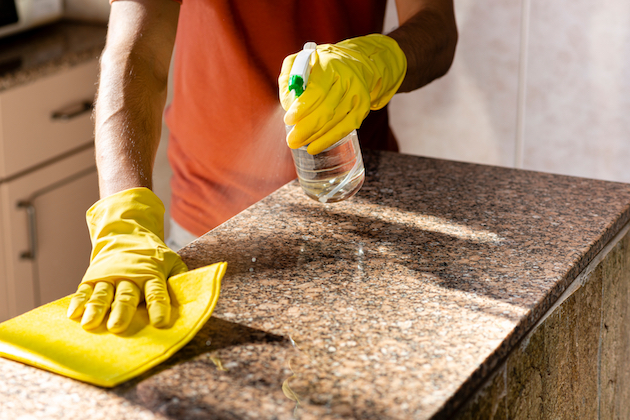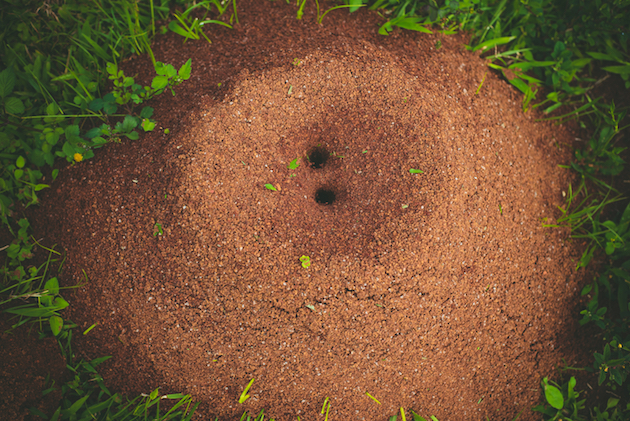By: Tatum Stafford
If you live in Western Australia, chances are you’ve battled trails of black ants in your house.
Although most are relatively harmless, ants can become serious pests when they start to infiltrate your house; especially as their colonies are usually permanent and tiresome to remove.
WA has many native and introduced species of ant but the two you’re most likely to find in and around your home are black house ants and white-footed house ants.
Black house ants are a native species well known for their house infestations. They can be attracted to water sources in kitchens and bathrooms, along with food scraps and sweet liquids. They can also form nests inside your home – even within wall cavities.
White-footed house ants have quite a sweet tooth, and as with black house ants, can also form nests inside your home. White-footed ants tend to be more active at night, whereas black house ants work 24-hours a day.
Fortunately, neither species will cause damage in your home other than spoiling your food. They also do not sting.
If you’re suffering an infestation, here are seven ways to help eradicate ants from your house.
1. Remove their food sources
Once you’ve noticed ants in your home, your first line of defence is always to remove any sources of food they can get to.
Ants are particularly drawn to fatty and sugary foods, so it’s important to keep your home free of food scraps as much as possible. Use sealed containers, wipe down bench tops and any other food preparation areas after use, and clean up any crumbs on the floor. Don’t forget to also clean in and around kitchen appliances, chair or couch cushions and rubbish bins.
Pet food can also attract ants. If ants are infiltrating your pet’s food bowl, try using one with a moat built into the outside edge that can be filled with water, so ants are unable to reach the bowl. Alternatively place their food bowl in a lager shallow dish filled with water.
Also feed your pet only when it can finish its food in one go. Once your pet has finished eating, give their bowl a rinse to eliminate the scent of food.
2. Clean surfaces with water and vinegar
After preparing or eating food, make sure you’re keeping your surfaces and floor free of crumbs by wiping up mess as soon as possible.
If ants are already present on surfaces, wiping them up with a mixture that is one part water and one part vinegar is an efficient way to kill them.
This solution will also help deter ants from returning to this area in the future, as ants can smell dried vinegar. Fortunately, once it’s dry, you won’t be able to.

3. Natural deterrents
Peppermint, eucalyptus or tea tree essential oils are natural insect repellents, and can be used in spray bottles to deter ants. However, you should be mindful that many essential oils, including eucalyptus and tea tree, are harmful to pets.
Vinegar and water can also act as a deterrent. Mix one part white vinegar and one part water together in a spray bottle and spray the ant trails.
Ants are also repelled by aromas from cinnamon, black pepper and garlic, so storing these in bowls around affected areas may help.
A very simple deterrent is to create a barrier with chalk. Simply draw a line on the wall or floor with a nice thick piece of chalk. Ants won’t walk across the calcium carbonate.
4. Make your own natural bait
A common ant bait recipe is a combination of borax and sugar with a little water. Use a one-to-one ratio of borax and sugar.
Mix the ingredients together and place the mixture into a container with a lid. Puncture several holes in the lid and place the container near an ant trail. It will take between two and three days for the borax to work against an ant invasion.
Made of a type of fossilised algae, diatomaceous earth comes as a fine powder and is an effective natural bait. It’s safe to use and can simply be sprinkled along ant trails. To humans, diatomaceous earth simply feels like a very soft, fine powder, but for ants, the sharp edges on the particles of powder pierce their exoskeleton.
Ever-versatile baking soda can also help. Just mix it with some fine sugar and sprinkle wherever you see ants. Attracted by the smell of the sugar they ingest the mixture, with the baking soda eventually killing them.
5. Hot water into the nest
If you notice a visible ant nest near your house, it’s best to cut the critters off at the source. Using a small spade, make a hole in the centre of the nest and pour boiling water into the hole. Repeat this until no more ants resurface from the nest.
However, be wary that some ants may survive during this process, so make sure you’re well covered up while standing near the nest.
6. Remove sources of water
Unluckily for WA residents, it’s common for ants to search for water in hot, dry weather. Ants require readily available water sources to build a colony, so inside leaks can quickly bring them into your home.
As such, it’s important to dry any pools that may have formed from water pipe damage, and to inspect your bathroom and other humid parts of your house regularly.
7. Seal up internal and external gaps and cracks
Of all the unwanted pests that find their way into your home, ants tiny stature means they have the biggest advantage – they don’t need much of a gap at all. If you’re unsure of how they’re making their way inside, follow any visible ant trails to find their entry and exit points. It could be cracks in walls, or gaps around door frames or window frames.
Once you've identified their entry points, seal them up with an appropriate sealant.
Pest problem? Get help from the experts
Members get 15% off general pest treatment for ants, spiders, cockroaches, and crickets at Termico Pest Management.*
*RAC member discounts not applicable to warranty renewal contracts or other Termico offers. Offer only applicable in metro and selected country areas. Spider treatment not available with pre-purchase inspection. Offer available once per household. To approved customers only.

